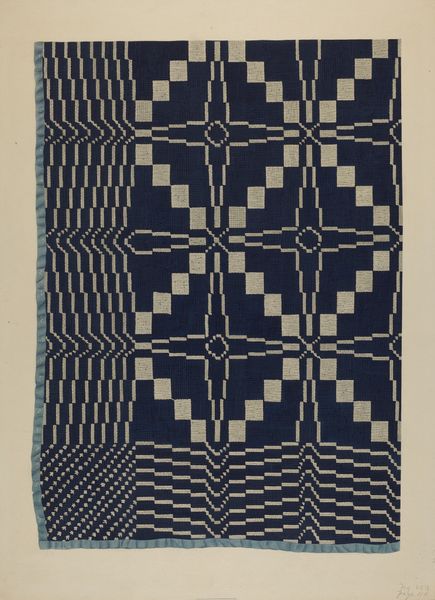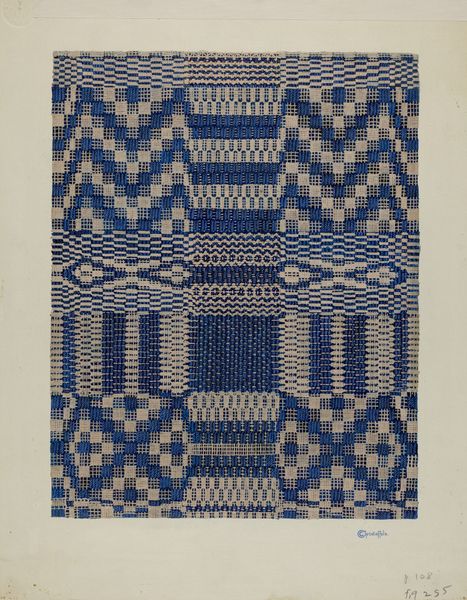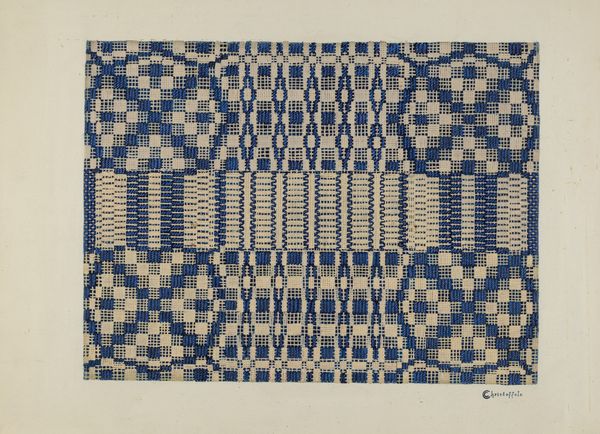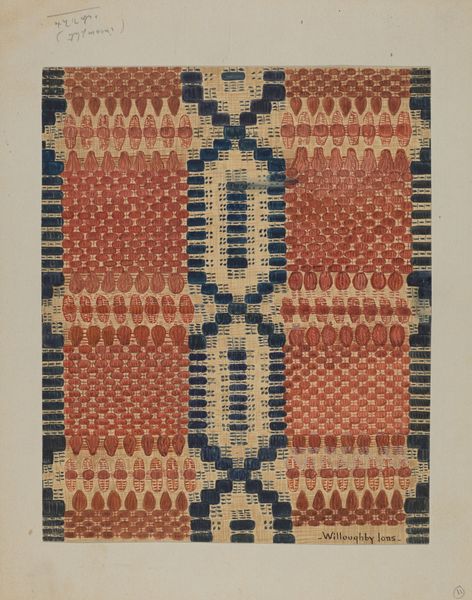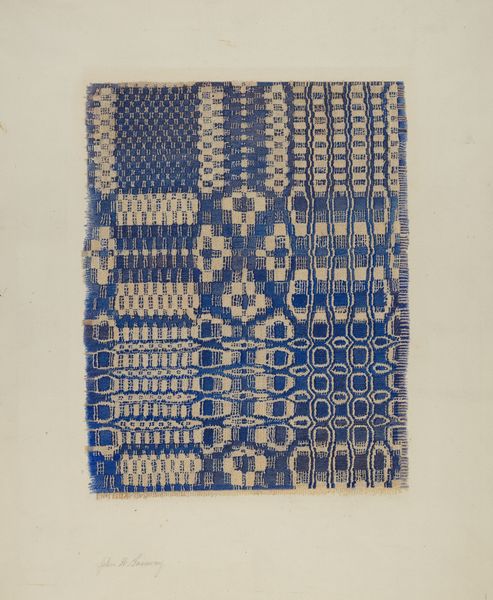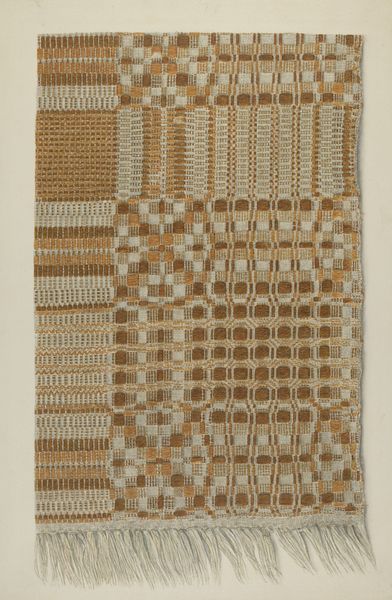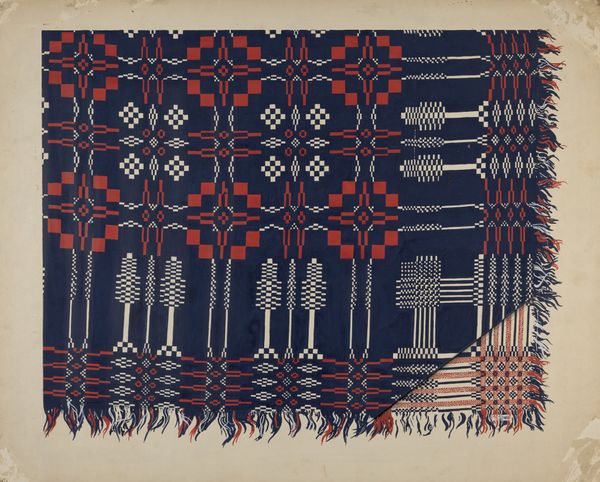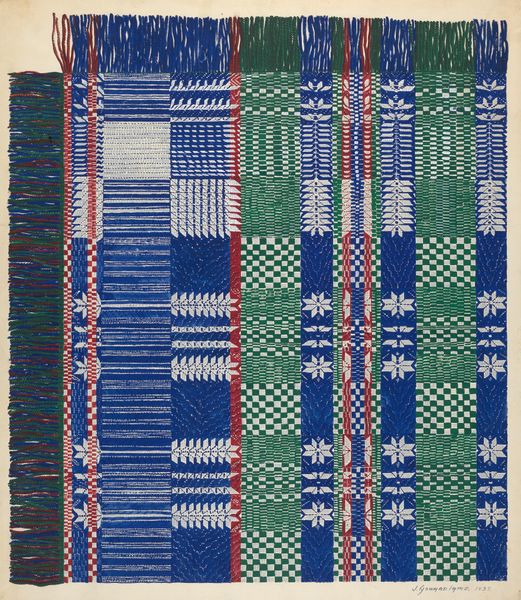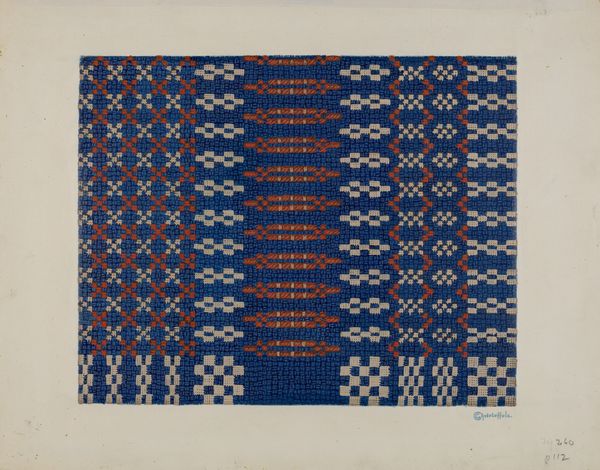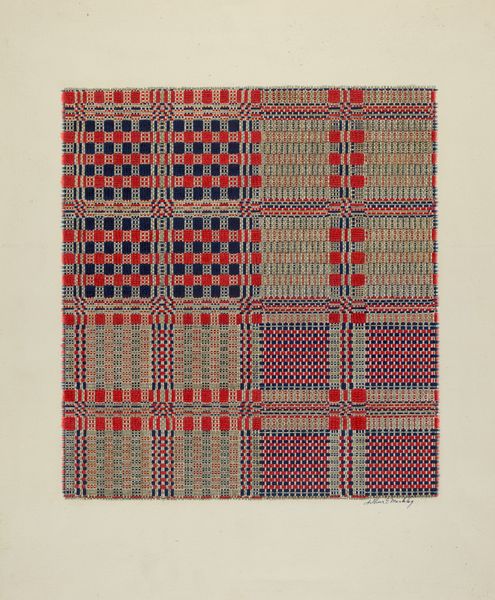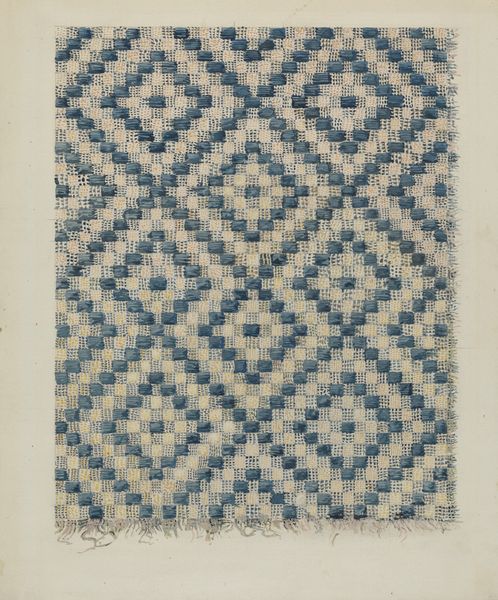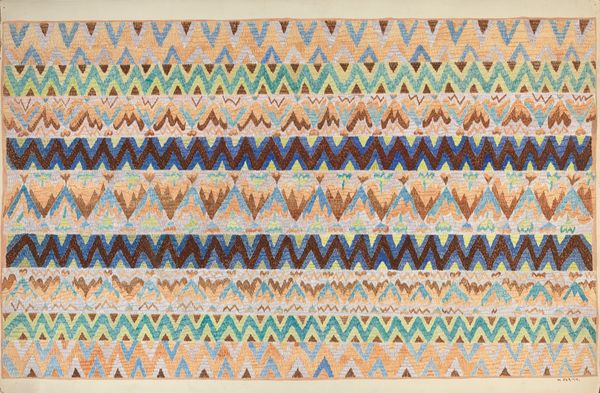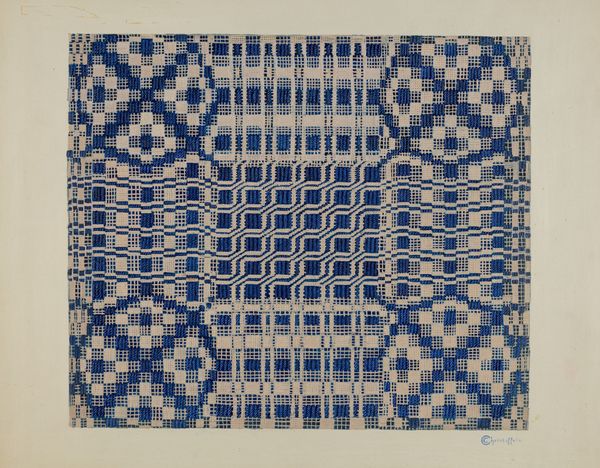
drawing, paper, watercolor
#
drawing
#
paper
#
watercolor
#
geometric
Dimensions: overall: 34.9 x 27.8 cm (13 3/4 x 10 15/16 in.) Original IAD Object: 76" square
Copyright: National Gallery of Art: CC0 1.0
Editor: This is Howard H. Sherman’s "Handwoven Coverlet" from 1936, a mixed-media drawing that depicts, among other weaves, geometric abstraction and fibre-art. The patterns evoke a sense of history but also have a striking, modern feel. What do you see in this piece? Curator: What strikes me immediately is its potential to disrupt traditional hierarchies of art. Often, works like this, deeply rooted in craft and domesticity, have been marginalized as "lesser" than, say, painting or sculpture. How does viewing this coverlet through a contemporary lens of gender and labor change our understanding? Editor: That's a fascinating point! I hadn’t thought about it in terms of its domestic origins. Do you mean the time-intensive nature of textile production? Curator: Exactly! Think about the historical context: In 1936, the labor of creating textiles like this was primarily done by women, often unpaid. It's critical to acknowledge that art history frequently overlooked these contributions. Can we reclaim this narrative, celebrating the skill and artistry involved as acts of resistance against societal norms? Editor: I never really considered the gender dynamics in that way before! It also speaks to how functional objects can also be incredibly beautiful and artistic. Is it trying to democratize art making? Curator: That's right. Recognizing these kinds of art forms allows us to challenge the traditional dominance of "fine art" and appreciate a broader range of creative expression. In some ways, by depicting an accessible artifact so beautifully, it does begin that process of democratization, which continues to this day. It also prompts a critical examination of who gets to decide what is art, and whose stories are deemed worthy of preservation. Editor: This conversation has been so eye-opening! Now, I can’t wait to do more research about the intersection of gender, labor, and textile arts. Curator: Indeed. I, too, am thinking about its placement in art history with greater intersectionality now. Thank you.
Comments
No comments
Be the first to comment and join the conversation on the ultimate creative platform.
